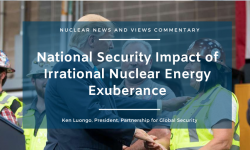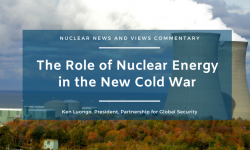There’s been an eruption of agreements between tech companies and nuclear power providers and developers driven by the growing need for zero-carbon, continuous energy for data centers and AI computing needs. This has turned the spotlight to how these projects will actually get deployed and where the money for them is going to come from.
The 20-year power purchase agreement between Microsoft and Constellation Energy will result in the restart of Three Mile Island Unit 1. This plant was retired in 2019 for economic competitiveness reasons and has a generating capacity of 837 MW. While this power will flow through the grid, Microsoft will be able to count all of it as clean energy for its operations. The goal is to reopen the plant by 2028.
Constellation will invest $1.6 billion to refurbish the TMI plant and is seeking a U.S. government loan guarantee for that amount. That is under evaluation, but the Department of Energy has already finalized a $1.52 billion loan guarantee to Holtec for the restart of the Palisades nuclear plant in Michigan.
Advanced reactor company X-energy recently announced an agreement with Amazon to deploy up to 5 GW of nuclear power by 2039. The X-energy Xe-100 is a small modular High-Temperature Gas Reactor that uses TRISO particle fuel and has an output of 80 MW.
Part of this deal is the unprecedented agreement by Amazon to invest $500 million in X-energy to support the completion of its reactor design, licensing process, and TRISO fuel fabrication plant in Tennessee. The initial goal is for 320 MW produced by four plants in central Washington state near Hanford. That could increase to twelve plants and 960 MW.
X-energy previously entered into a joint development agreement with Dow to provide four reactors to power the Seadrift Site in Texas. They will provide process heat and energy to the site. Under the JDA, Dow has invested $25 million for engineering work. Operation of the reactor at Seadrift is expected by 2030.
Kairos Power and Google also have entered into a partnership for the deployment of a fleet of advanced reactors that can provide 500 MW by 2035. Under the Power Purchase Agreement, Kairos will provide clean energy to Google’s data centers beginning in 2030.
The Kairos Power FHR is a TRISO-fueled pebble bed reactor with molten salt as the coolant. It has an output of 150 Mwe. Kairos has broken ground on the Hermes demonstration reactor at Oak Ridge national laboratory which will be the test bed for the commercial reactor.
In addition, TerraPower began non-nuclear construction work at the Kemmerer, Wyoming site where the first Natrium reactor will be located. This reactor is a 345 MW sodium-cooled fast reactor that is paired with a molten salt energy storage system. TerraPower’s founder, Bill Gates has invested over $1 billion in the technology and is prepared to provide billions more.
Outside the U.S., the Rolls Royce SMR, Holtec SMR 300, BWRX-300, and Westinghouse AP-300 are in the running for support from the British government as it seeks to deploy small modular reactors.
In Canada, the ARC-100 reactor has been proposed for construction at New Brunswick’s Point Lepreau nuclear power station and the Moltex Stable Salt Reactor has received government financial support.
In Romania and other Eastern European nations, as well as in Ghana in Africa, the NuScale SMR is under consideration for deployment and training centers have been established.
Much of this activity has been further boosted by the commitment by major banks at NY Climate Week to support the goal of tripling global nuclear power by 2050. Although the commitment to specific projects was absent from that pledge. This raises the question of how to build on these positive developments and achieve the sustained scale of financing that is required to build more nuclear reactors.
One challenge is that just in the list of deals to date there are five different molten salt reactor designs and multiple units of each in private deals and five different LEU-fueled SMRs that are under consideration for various deployments. This is in addition to the larger Westinghouse AP-1000s designated for Poland and perhaps other nations.
This kind of diversity of projects can create challenges in the licensing process and could create concern in the financing community about the ability to overcome front-end risk and the ability to build fleets of reactors in a way that would reduce costs and assure timelines.
The recent U.S. DoE Nuclear Energy Liftoff report offered cautions about this technology diversity and some suggestion for how these challenges can be tackled. One creative solution is green bonds.
Also, both the U.S. EXIM bank and the Development Finance Corporation are in line for reauthorization next year which could be an opportunity to provide more funds to support nuclear exports.
But it will require tens of billions of dollars in private-public partnership to support the expansion of domestic construction and export of American reactors. At the moment, the U.S. government does not have this scale of financing available for deployment at home or abroad. And the banks are not charities.
So, while the power deal announcements are clear and important the financing commitments remain murky and in need of clarity.
Ken Luongo, President, Partnership for Global Security






